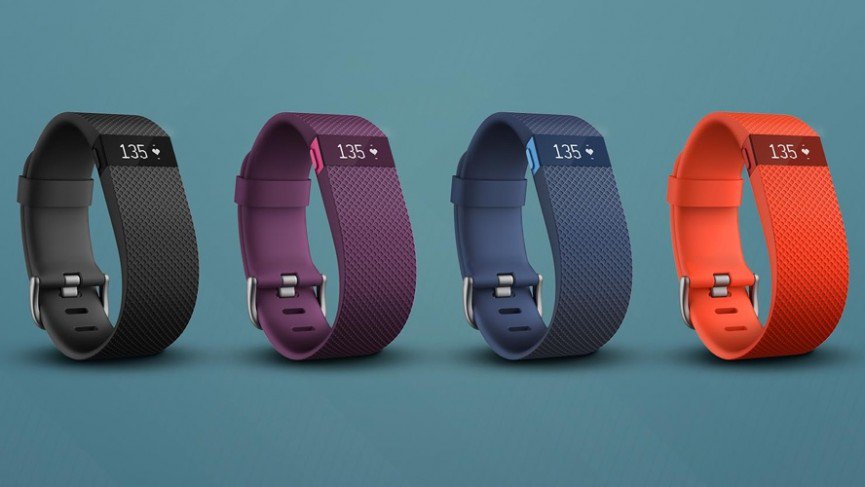After the wild success of the Fitbit Flex, the Fitbit Charge HR is the successor with much to prove. At just S$199 — a mere $30 more than the Fitbit Charge — you can get all its capabilities without breaking much of a sweat.
If you’ve already gotten your hands on the Fitbit Charge HR, here are the best ways to get the most out of it.
Know Your Stride Length

Your stride length is one of the many things that determine the accuracy of your Fitbit readings, so it’s really important to get right. Your Charge will try to guess it based on the height and gender you put in (and this may not always be accurate), so you’re better off figuring it out by yourself.
To figure out your average stride length, go to a running track or a stretch of hallway or road that you know the exact distance of. Walk that distance while counting the number of steps you take. Divide the length of that distance by the number of steps you took to get your stride length. You can then change that value under Personal Info in the Fitbit website.
Know How To Wear It

The biggest draw of the Fitbit Charge HR is its heart rate monitor, so keep that in mind when adjusting your lovely new Fitbit strap. Don’t make it too tight such that it affects your readings, but not so loose that it won’t actually record your heart rate.
There have been mixed reviews about the comfort of the Fitbit Charge HR, but generally, it shouldn’t cause rashes or too much chaffing. Experiment with wearing the Fitbit Charge HR higher on your wrist; you may get a better heart rate signal and avoid the disruption that may happen when you bend your wrists.
Also, be sure to tell the Fitbit which wrist you are wearing it on, as the readings it will get from your dominant hand will be different from the other one, and it will need to adjust its readings accordingly.
Understand Heart Rates

To use the Fitbit Charge HR to its full potential, you have to know how to read it and use it to fit your goals.
There are three ranges of heart rates that you need to watch out for:
- ‘Fat burn’: a low level zone where your body begins to burn calories.
- ‘Cardio’: the ideal zone you should align yourself in to improve your cardiovascular fitness.
- ‘Peak’: the limit that you should avoid crossing over. This zone will improve your anaerobic threshold, teaching your body how to work more efficiently. However, it can only be sustained in short bursts, or you risk overexertion.
Once you learn to read your heart rate, the Fitbit Charge will become a tool to read your body with, showing you your progress, and even anomalies. For example, if your resting heart rate is 10 beats per minute (BPM) higher than your average, then you’re probably overexercising.
Set Your Own Heartrate Zone

Do you have a specific heartrate range that you’re aiming for? Then set one up for yourself. Just log in to fitbit.com, get into settings, and access ‘Heart Rate Zones’ to set the upper and lower limits of your desired zone.
Once you sync your Charge HR, the new settings will be automatically registered.
Maximise Your Battery Life
While a fully charged Charge HR is said to last about five days before needing a charge, it is possible to stretch it to a full week. The feature that will suck up the most juice is the All-Day sync, where your phone continuously receives readings from your tracker. Turn that off in your Fitbit app, and you should get at least an extra day more.
The tracker will let you know if you have a day or less of battery, but you can also set it so that you get a mobile notification when your battery is low. Just log onto the Fitbit web portal, go to settings, and select notifications. You’ll get to pick from a variety of notifications from there.
Social Challenges

There’s nothing like a few manageable goals and a bit of peer pressure to push you further. That’s how Fitbit’s Challenges can help out. Under Challenges (located at the bottom of the Fitbit App), you’ll get a few suggestions which you can use to push yourself and your friends to achieve.
Make it into a game and see who can get the most steps a day or over the weekend, with up to 9 friends (10 people in total). That’ll be sure to earn you some bragging rights.
Customise the OLED display

Having a wearable is all about adapting it to your lifestyle, so it’s always better to customise its display to your own preferences.
Through the Fitbit app, you will be able to change the details displayed for time, steps, distance, floors, and even calories. You can also change the order of the metrics that show up — so if you’re not interested in your steps but keen on watching your calories, you can move it up so that it’s the first thing you see when you swipe on your display screen.
You can even change the watch face to suit your own style, though there aren’t many options as of yet.
Make full use of that smartphone app

Where the old Fitbit app was clunky and difficult to use, the new revamped app is intuitive and simple. When you open the app, it shows you your day’s metrics at a glance, without having to tap around to discover new information.
The app also comes with MobileRun mode, which makes use of GPS data to track your walks and runs more accurately, even tapping into your music playlists from the app itself. This will help you get the most out of your morning jogs.
Simply select Exercise from the home screen, tap the stopwatch icon in the top right corner, and it will bring up a map of your area. When you begin your run, tap start to track your run. This will override your tracker’s readings to calculate distance, steps, active minutes, and calories burned.
Take Care Of Your Fitbit Charge HR

To make sure that your Fitbit Charge HR is working in optimal condition, you need to make sure that it’s being taken care of. Clean and dry it regularly, and try to use less products where you wear it (like heavy lotions or sun block) as it may affect the heart rate sensors.
Also use either a toothpick or toothbrush to clean the charging contacts behind the watch. Avoid using metal to scrape them, though, as that may damage the plating, and your new Fitbit won’t last very long.
Lifestyle Change

Fitness isn’t just about the numbers; it’s a lifestyle. Adopt a new diet, smoke and drink less, and take the stairs up to your office instead of taking the elevator. By adopting a lifestyle around improving your overall health and fitness, you’ll be able to see results much quicker. After all, there’s no point hitting those 10,000 steps if you’re eating fried chicken every day.








